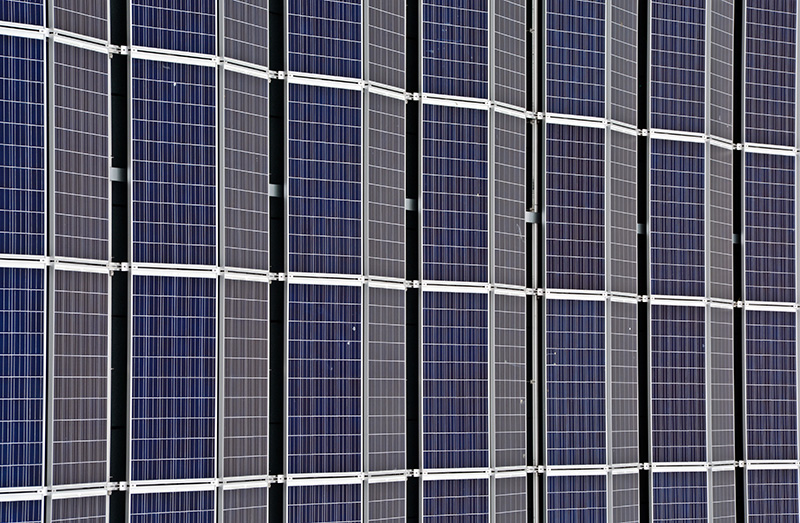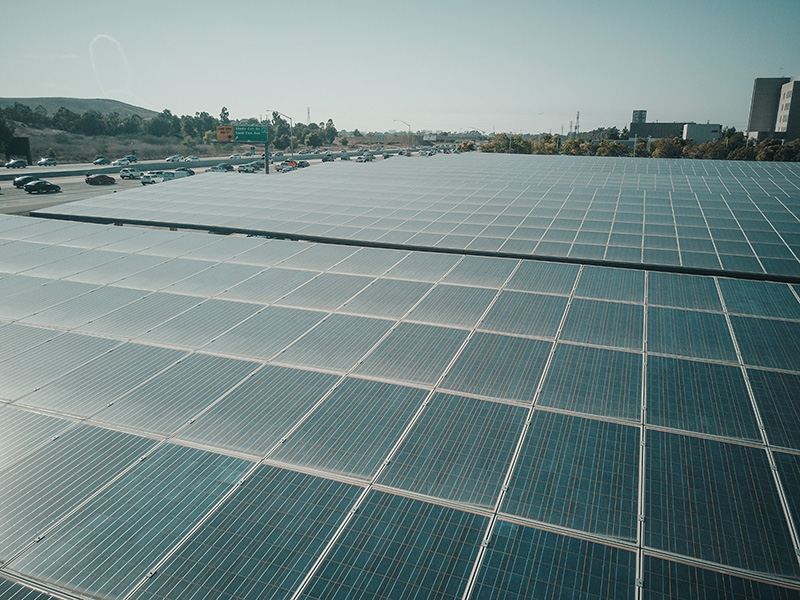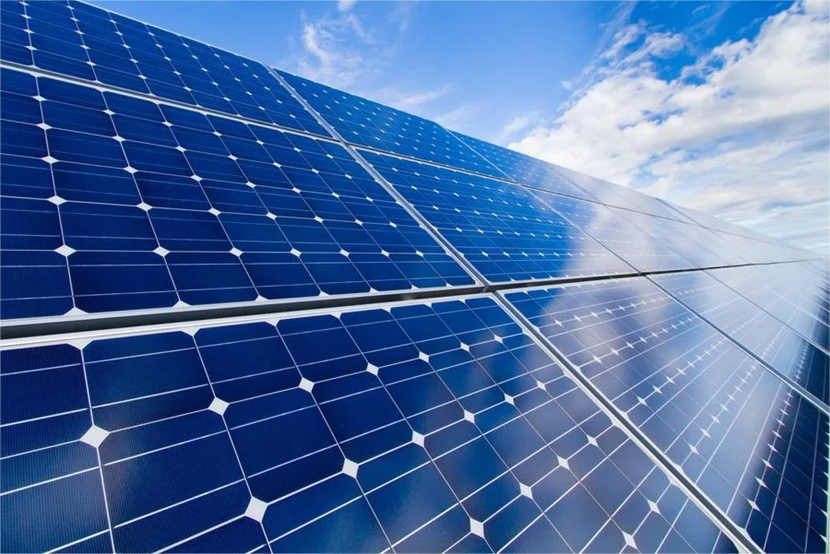Description
The average cost ranged from $2.50 to $3.50 per watt, meaning a typical 300-watt solar panel might cost between $750 and $1,050.But prices have likely changed,the average cost of a solar panel can vary widely based on factors such as capacity, manufacturer, region, and technological advancements. It's important to check current market rates or consult a local supplier for the most up-to-date pricing.
Types of Solar Panels
Monocrystalline solar panels are m ade from single-crystal silicon. This type of solar panel is known for its high efficiency due to the purity of the silicon used.
Advantages
- High Efficiency: Monocrystalline panels typically have a higher efficiency compared to other types.
- Space Efficient: These panels produce more power per square foot, making them ideal for areas with limited space.
- Longevity: With proper care, monocrystalline panels can last 25 years or more.
Disadvantages
- Cost: They are generally more expensive due to the manufacturing process which uses high-quality silicon.
- Waste: The process to make these panels results in wasted silicon.
Polycrystalline solar panels, also known as multi-crystalline panels, are made from multiple silicon fragments melted together.
Advantages
- Cost-Effective: Typically less expensive than monocrystalline panels.
- Sustainable Production: The process to make these panels wastes less silicon.
Disadvantages
- Lower Efficiency: Generally, they have a lower efficiency compared to monocrystalline panels.
- Aesthetics: Some people find the blueish hue less attractive.
Thin-film solar panels are made by placing several thin layers of photovoltaic material onto a substrate.
Advantages
- Flexibility: These panels can be flexible, allowing for a variety of applications.
- Lightweight: Ideal for situations where weight is a concern.
- Cost: Generally the least expensive type of solar panel.
Disadvantages
- Efficiency: They typically have the lowest efficiency of the three types.
- Space: More space is required to produce the same amount of power as crystalline panels.
Comparing Efficiency and Cost
| Solar Panel Type |
Efficiency |
Cost |
| Monocrystalline |
✔✔✔ |
❌❌ |
| Polycrystalline |
✔✔ |
✔ |
| Thin-Film |
✔ |
✔✔✔ |
Note: The "✔" and "❌" signs are used to represent high to low efficiency and cost respectively, with more "✔" indicating higher efficiency or lower cost and more "❌" indicating lower efficiency or higher cost.
Components of Solar Panel Pricing
Material Costs
Silicon, primarily used in traditional photovoltaic solar panels, has seen its cost vary over the years. As of 2021, the price ranged from $10 to $20 per kilogram. Innovations and the increasing demand for solar panels could drive these costs down further.
Materials such as silver and aluminum used in the construction can also influence the overall cost. Silver, which is used in higher-end panels for its conductivity, was priced around $0.50 to $0.70 per gram.
Other materials, like glass and backing materials, add to the overall cost but are generally less expensive than the primary materials.
Manufacturing and Labor Costs
The
cost of manufacturing can vary based on the region, machinery used, and the scale of the operation. On average, manufacturing costs can account for 20-25% of the total panel cost.
Labor costs also differ significantly from region to region. For instance, labor in Asia, especially in countries like China, is typically cheaper than in North America or Europe. On average, labor might account for around $0.10 to $0.30 per watt of the panel's capacity.
Distribution and Transportation Costs
Solar panels are heavy and delicate, which can increase local distribution costs. Depending on the region and distance, this could range from $0.05 to $0.15 per watt.
When solar panels are shipped internationally, costs can escalate, especially when considering customs duties, taxes, and other associated fees. International shipping could add an additional $0.20 to $0.40 per watt to the panel's cost.
These are broad estimates and actual costs can vary based on various factors like supplier, region-specific dynamics, technological advancements, and global economic conditions.
Cost Breakdown by Region
The cost of solar panels can differ substantially depending on the region due to a myriad of factors, such as import tariffs, local manufacturing capabilities, incentives, and the overall demand for solar energy in that area.
North America: The U.S. and Canada have seen a consistent decrease in solar panel costs, largely due to government incentives and the rapid expansion of local manufacturing capacities. Additionally, increased competition among suppliers and installers has contributed to more competitive pricing.
Europe: European countries, particularly Germany and Spain, have been pioneers in adopting solar energy. The presence of many manufacturers and a mature market has resulted in moderately priced solar panels. However, some countries with less solar adoption may still experience higher prices due to lower local demand.
Asia-Pacific: This region, notably China and India, has become a significant player in solar panel manufacturing, leading to some of the lowest prices globally. The massive scale of production and local incentives to promote solar energy have driven costs down.
Africa: The African market is diverse, with countries like South Africa experiencing a boom in solar energy and enjoying competitive prices. However, in nations where the solar industry is still nascent, import tariffs and transportation costs can inflate solar panel prices.
South America: Countries like Brazil and Chile are taking significant strides in solar energy. The costs here are influenced by local manufacturing capabilities, import policies, and the region's overall demand for solar technology.
In summary, while the global trend sees a steady decline in solar panel prices, local market dynamics, government policies, and manufacturing capabilities play a crucial role in determining the cost in a specific region.
This table provides a clear breakdown of the average costs associated with solar panels in different regions. It's important to note that these are estimates and real-world figures might fluctuate based on various factors.
Factors Affecting Solar Panel Cost
Efficiency and Performance
The
efficiency of a solar panel indicates how much sunlight it can convert into usable electricity. Higher efficiency usually means you'll need fewer panels to generate the same amount of power, which can save on installation costs and space.
There are several factors that can influence the efficiency and performance of a solar panel:
- Material Type: Monocrystalline panels tend to be more efficient than polycrystalline or thin-film panels, but they can also be more expensive.
- Temperature Coefficient: Solar panels become less efficient as they get hotter. Panels with a lower temperature coefficient will perform better in warmer climates.
- Tilt and Orientation: The position and angle of the solar panel can affect its performance. Ideally, panels should face the sun directly and be tilted for optimal sunlight exposure.
Brand and Manufacturer
The reputation and quality of the brand or manufacturer can significantly influence the cost of solar panels. Established brands often offer higher quality panels but may charge a premium for their products.
One notable brand in the market is
Tongwei, which has gained recognition for its commitment to quality and innovation in the solar industry. However, the price of panels from such recognized brands might be higher compared to lesser-known brands. It's essential to weigh the cost against the quality, performance, and longevity offered by the brand.
Warranty and Durability
A longer
warranty often indicates a manufacturer's confidence in their product's durability. Most solar panels come with a performance warranty, usually around 25 years, ensuring the panels will still produce a certain percentage of their initial output after a given number of years.
Additionally, panels might come with a separate materials warranty, covering manufacturing defects or premature wear and tear. Higher quality panels with longer warranties might cost more upfront, but they can provide better long-term value.
Remember, when considering the cost of solar panels, it's essential to look beyond just the initial price. Factors like efficiency, brand reputation, and warranty can influence the total cost of ownership over the panel's lifespan.
Additional Costs to Consider
Maintenance and Cleaning
While solar panels generally require minimal
maintenance, occasional cleaning ensures they operate at peak efficiency. Dirt, debris, and bird droppings can reduce a panel's efficiency. Depending on the region and environment, cleaning might be necessary several times a year. Professionals typically charge between $100 and $300 for this service, but costs can vary based on the size and accessibility of the installation.
For those living in snow-prone areas, investing in a snow rake to clear off panels might also be a good idea.
Inverter Replacement
The inverter is a crucial component of a solar system, converting direct current (DC) produced by the solar panels into alternating current (AC) for home use. Over time,
inverters can wear out and might need replacement. Typically, an inverter's lifespan is around 10 to 15 years, shorter than solar panels themselves. Replacement costs can range from $1,000 to $2,500, depending on the system's size and inverter quality.
Battery Storage Systems
For homeowners looking to store excess solar energy, adding a battery storage system is an option. This system allows for energy usage during nights or cloudy days, enhancing the overall utility of a solar setup. Battery systems, such as the Tesla Powerwall or the LG Chem Resu, can range from $5,000 to $15,000, inclusive of installation. Additionally, these batteries usually need replacement every 10 to 15 years.
System Monitoring and Control
Modern solar installations often come with
monitoring systems that track the performance and output of the solar panels. These systems provide real-time data and alert homeowners of any issues. While some companies offer basic monitoring services for free, more advanced systems, offering detailed analytics and remote control capabilities, might come with a monthly or yearly fee, ranging from $10 to $30 per month.
It's essential to factor in these additional costs when considering a solar installation. Doing so ensures a comprehensive understanding of the total investment over the system's lifespan.



